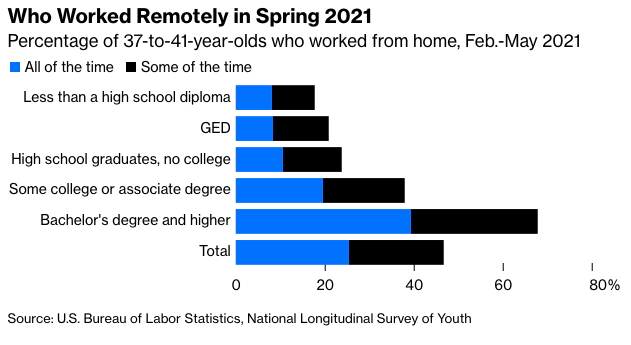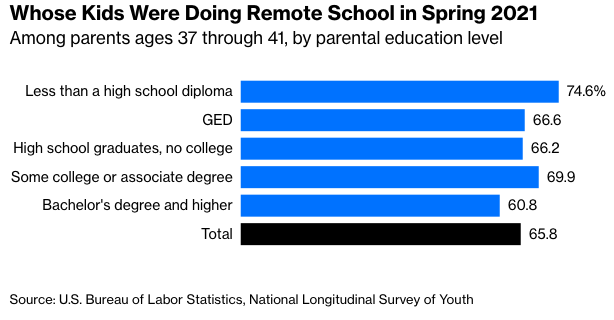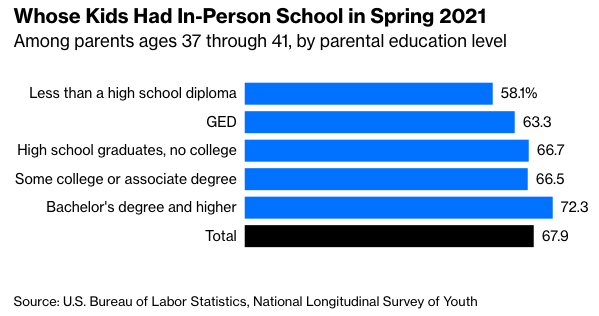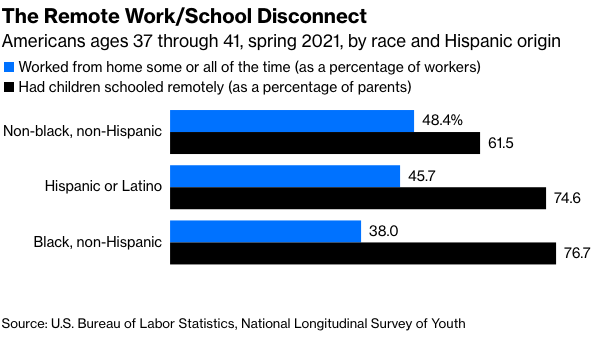The pandemic-induced work-from-home revolution of the past two years has been mostly a phenomenon of the affluent and the educated. That’s not exactly news, but was reinforced this month with some new Bureau of Labor Statistics data.
These numbers come from the latest iteration, conducted from February through May of last year, of a long-running longitudinal survey of 8,984 people born in the U.S. from 1980 through 1984. That explains why it’s only 37-to-41-year-olds. There is no timely, complete government data on how many Americans of all ages are working from home, so it’s useful to know that 25.3% of those ages 37 through 41 did so exclusively the week before they were surveyed and 21.3% did so part of the time.1 Those with bachelor’s degrees and higher were about three times likelier to have worked from home than those who didn’t go to college.
Because this cohort currently includes lots of parents of school-age children, there’s more useful pandemic-related information that can be gleaned from it. The survey takers asked the parents in the group whether their kids had attended in-person classes or done remote schooling in the previous week, and the responses when broken down by educational attainment (a flawed but indispensable proxy for socioeconomic class) and race are pretty enlightening.
Here are the numbers for remote schooling by the parent’s education:
Some parents reported that their kids did both remote and in-person school, so just to be complete, here are the in-person schooling numbers.
Apart from some quirks with the some-college-or-associate degree group, the picture is clear, and it seems a bit perverse. Parents with lower education levels, who were less likely to be able to work from home and thus supervise their kids there while keeping their jobs, were more likely to have kids doing remote school and less likely to have kids attending in-person school. The same holds when you sort the respondents by race and ethnicity.












